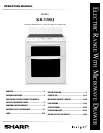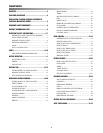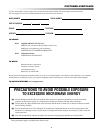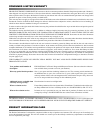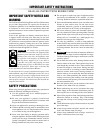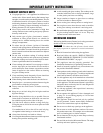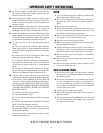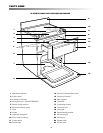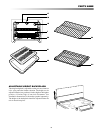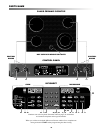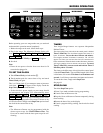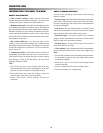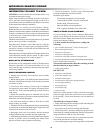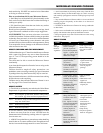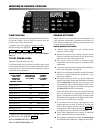
7
IMPORTANT SAFETY INSTRUCTIONS
14 Be sure that fingers or other objects or materials are
not around the Microwave Drawer opening when the
Microwave Drawer is closed.
15 Do not put fingers or clothes around the drawer guides
when the Microwave Drawer is opened or closed. They
could be caught in the guides when the Microwave
Drawer is closed.
16 Be sure that the food and container are shorter than the
Microwave Drawer before closing it. You can refer to
the height of the side walls of the Microwave Drawer.
17 When cleaning Microwave Drawer sealing surfaces that
come together on closing the drawer, use only mild,
nonabrasive soaps or detergents applied with a sponge
or soft cloth. See cleaning instructions on page 27.
18 To reduce the risk of fire in the Microwave Drawer
cavity:
a Do not overcook food. Carefully attend appliance
when paper, plastic or other combustible materials
are placed inside the Microwave Drawer to facilitate
cooking.
b Remove wire twist-ties from paper or plastic bags
before placing bag in Microwave Drawer.
c If materials inside the Microwave Drawer ignite,
keep Microwave Drawer door closed, turn microwave
off and shut off power at the fuse or circuit breaker
panel.
d Do not use the Microwave Drawer for storage
purposes. Do not leave paper products, cooking utensils,
or food in the Microwave Drawer when not in use.
19 Liquids, such as water, coffee or tea are able to be
overheated beyond the boiling point without appearing
to be boiling. Visible bubbling or boiling when the
container is removed from the Microwave Drawer is
not always present. THIS COULD RESULT IN VERY
HOT LIQUIDS SUDDENLY BOILING OVER WHEN
A SPOON OR OTHER UTENSIL IS INSERTED
INTO THE LIQUID.
To reduce the risk of injury to persons:
a Do not overheat the liquid.
b Stir the liquid both before and halfway through
heating it.
c Do not use straight-sided containers with narrow
necks. Use a wide-mouthed container.
d After heating, allow the container to stand in
the Microwave Drawer at least for 20 seconds before
removing the container.
e Use extreme care when inserting a spoon or other
utensil into the container.
OVEN
1 Use care when opening door—let hot air or steam escape
before removing or replacing food.
2 Do not heat unopened food containers. Build-up of
pressure may cause container to burst and result in
injury.
3 Keep oven vent unobstructed.
4 Always place oven racks in desired locations while oven
is cool. If rack must be moved while oven is hot, do not
let potholder contact hot heating element.
5 Do not use aluminum foil to line oven bottom, as use
may result in a risk of electric shock or fire.
6 Keep the oven free from grease buildup.
7 When using cooking or roasting bags in the oven, follow
the manufacturerʼs directions.
8 Pulling out the rack to the stop-lock is a convenience in
lifting heavy foods. It is also a precaution against burns
from touching hot surfaces of the door or oven walls.
9 Do not use the oven to dry newspapers. If overheated,
they can catch fire.
10 Do not use the oven for a storage area. Items stored in
oven can ignite.
11 Do not leave paper products, cooking utensils or food
in the oven when not in use.
SELF-CLEANING OVEN
1 Do not clean door gasket. The door gasket is essential
for a good seal. Care should be taken not to rub, damage
or move the gasket.
2 Do not use oven cleaners. No commercial oven cleaner
or oven liner protective coating of any kind should be
used in or around any part of the oven. Residue from
oven cleaners will damage the inside of the oven when
the self-clean cycle is used.
3 Clean only parts listed in this manual.
4 Before self-cleaning the oven, remove broiler pan, racks,
and other utensils.
5 If the self-cleaning mode malfunctions, turn the oven
off and disconnect the power supply. Have it serviced
by a qualified technician.
SAVE THESE INSTRUCTIONS



